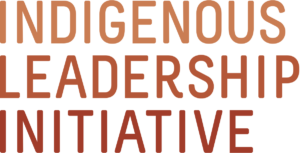FAQ About the Indigenous Village at COP15
FAQ
November 29, 2022
Français
Photo credit: Amos Scott
The Indigenous Leadership Initiative is hosting an Indigenous Village within the Green Zone at COP15. The Village will showcase the stewardship of Indigenous Peoples from the region, Canada, and around the world, and it will offer an Indigenized gathering space for Indigenous participants to COP15.
Here are answers to frequently asked questions about the Village:
-
The Indigenous Leadership Initiative (ILI) is dedicated to supporting Indigenous Nations in honouring the responsibility to care for lands and waters. We are the only national Indigenous-led conservation organization in Canada.
We work to advance Indigenous leadership on the land, because determining the future of traditional territories is an expression of Nationhood. We believe healthy lands support healthy individuals, healthy families, and healthy communities. Together they form strong Indigenous Nations.
-
ILI’s top priority at COP15 is shining a spotlight on the leadership of Indigenous Peoples in sustaining biodiversity in Canada and around the world. The Village helps us do that.
It offers an Indigenized space within COP15 where Indigenous Peoples can feel welcome and recognized as leaders in the global effort to conserve biodiversity. And it also provides three full days of events focused entirely on Indigenous approaches to caring for lands and waters.
-
You can find the Village along the Prom. du Vieux-Port, across from the Grand Quai du Port de Montréal. Parking is available at the Old Port of Montreal for a fee. The village will be open from December 9 through December 11, with programs starting at 9:00 a.m. ET. You can learn more about village activities at this page, which will be frequently updated with the latest information about the agenda.
-
Please note that the structures have been adjust to welcome large groups; their traditional size varied.
The Innu shaputuan at the Village offers a hundred-foot-long heat conference space that can accommodate 120 people, along with a stage, screen, and podium. Traditionally, the shaputuan was a gathering place, especially after the caribou hunt. The Innu matutushan is a domed tent commonly known as a sweat lodge. In the past, ancestors used the matutushan to heal themselves physically and mentally, and Innu today also use it in their spiritual practices.
The longhouse is a traditional housing style of the Confederate Nations such as the Wendat, the Haudenosaunee, and many others. In the past, many families lived in a single longhouse. Today, longhouses continue to form the heart of community life, providing a place to gather and tell stories, perform ceremonies, and socialize.
The teepee, often used by the Cree, Innu, Atikamekw, and other Algonquin-speaking Nations, has many uses. In the past, it provided a well-insulated home in the winter and was easy to set up and take down during hunts or other travels. While they have given way to other types of housing, teepees continue to provide an important space for cultural and spiritual ceremonies for many communities.
-
ILI worked with partners to identify themes and models that resonate and inspire across territories. We are following protocols of local Nations, including the Kahnawa:ke, upon whose territory Montreal sits, and we are welcoming leaders from Indigenous governments, the Assembly of First Nations, and Indigenous delegates to COP15 from around the world. Like all ILI events, the village will start and close in ceremony.
The demand for time on the agenda outstripped the available space—a sign of the growing momentum surrounding Indigenous-led conservation—so unfortunately, we could not accommodate all partners on the schedule.
-
We welcome all participants, especially Indigenous delegates, Elders, youth, and leaders from across Canada and the world. The village is within the Green Zone of COP15, which means no day passes are required to attend.
Reporters are welcome to visit the village, though please note that no recordings or filming will be allowed during the opening and closing ceremonies.
-
The cultural demonstrations at the village reflect the relationships between people and the land. There will be music, dancing, traditional food preparation, beading, and other art forms. People will speak about canoe and paddle making. Vendors onsite will sell art, jewelry, and other products; cash will be required.
-
Coffee, water, hot tea, and juices will be offered (limited numbers).
-
Panels and presentations will occur inside the shaputuan. The shaputuan will be heated to about 15 or 18, so participants may want to dress in layers. We will provide hand warmers if anyone needs them.
Some of the cultural demonstrations will take place outside, especially the lighting of the fire and the dancing demonstrations during lunch time.
-
Most presentations are scheduled to be in the English language, and Interpretation in French, and Spanish will be available for programming inside the shaputuan.
-
The ILI is committed to making the village a zero-emissions event. We worked closely with the City of Montreal and the Old Port of Montreal to explore options for electricity for heat and audio-visual needs.
Because we are unable to plug into the Old Port’s power system, we must rely on generators. And because no mobile generators powered by renewable energy are available within the region, we have to use diesel-powered generators. As a result, we will purchase carbon offsets for the Indigenous Village through an accredited program.


